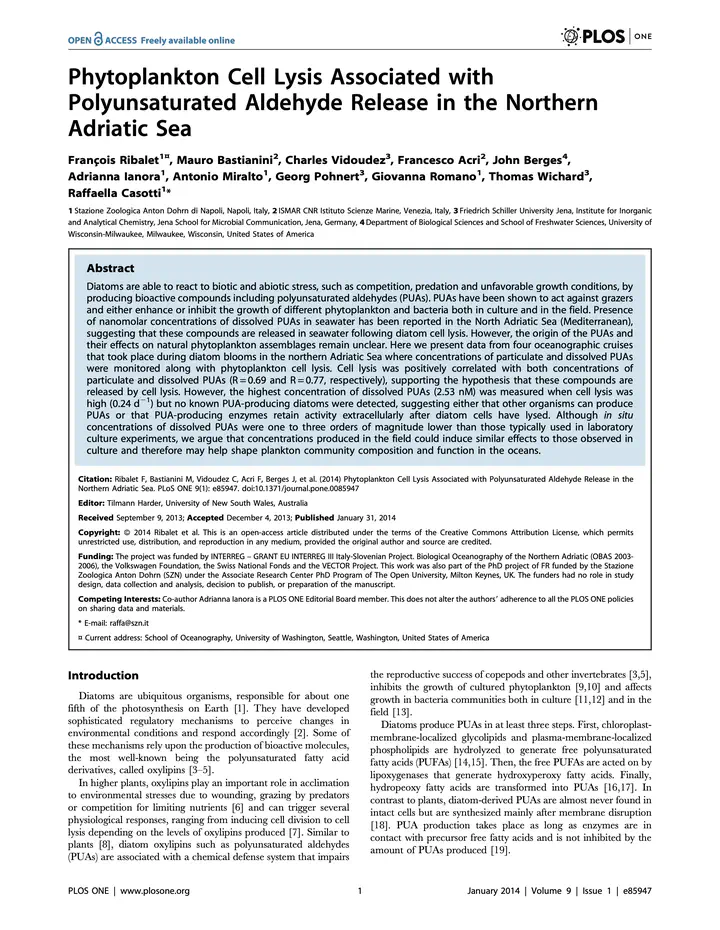Phytoplankton cell lysis associated with polyunsaturated aldehyde release in the northern Adriatic Sea

Abstract
Diatoms are able to react to biotic and abiotic stress, such as competition, predation and unfavorable growth conditions, by producing bioactive compounds including polyunsaturated aldehydes (PUAs). PUAs have been shown to act against grazers and either enhance or inhibit the growth of different phytoplankton and bacteria both in culture and in the field. Presence of nanomolar concentrations of dissolved PUAs in seawater has been reported in the North Adriatic Sea (Mediterranean), suggesting that these compounds are released in seawater following diatom cell lysis. However, the origin of the PUAs and their effects on natural phytoplankton assemblages remain unclear. Here we present data from four oceanographic cruises that took place during diatom blooms in the northern Adriatic Sea where concentrations of particulate and dissolved PUAs were monitored along with phytoplankton cell lysis. Cell lysis was positively correlated with both concentrations of particulate and dissolved PUAs (R = 0.69 and R = 0.77, respectively), supporting the hypothesis that these compounds are released by cell lysis. However, the highest concentration of dissolved PUAs (2.53 nM) was measured when cell lysis was high (0.24 d(-1)) but no known PUA-producing diatoms were detected, suggesting either that other organisms can produce PUAs or that PUA-producing enzymes retain activity extracellularly after diatom cells have lysed. Although in situ concentrations of dissolved PUAs were one to three orders of magnitude lower than those typically used in laboratory culture experiments, we argue that concentrations produced in the field could induce similar effects to those observed in culture and therefore may help shape plankton community composition and function in the oceans.